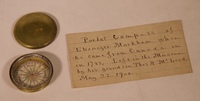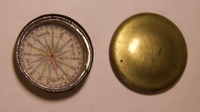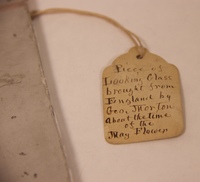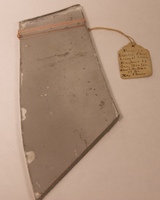Sheldon's Legacy
Though some of Sheldon’s items seem eccentric at first glance, a closer look reveals a striking continuity, a story of America in its nascent form. The compass, for example, was dated in 1783, the same year America won the war for independence from England. Despite occasional negative reactions to his strange collection, one newspaper even calling him a “junk collector”, Sheldon clearly held his items in high regard, and for good reason (Vermonter). The Vermonter, a twenty-first century publication, may not be considering the items in the same way Sheldon did centuries earlier.
In the same vein as the compass, another part of Sheldon’s collection, the broken looking glass, seems relatively simple on first glance, until one reads the tag, which reveals the looking glass hails from the time of the Mayflower. Immediately, the dull, broken glass transforms into a relic from the time of pilgrims and wooden ships and a nascent America, an era Sheldon was clearly interested in. Ebenezer Markham, the original owner of the compass and an intriguing figure in the Sheldon Collection, is reduced to a mere birth and death statistic in the local newspaper, showing how many incredible stories lie below the surface of ordinary objects. By cataloging each item by hand, Sheldon demonstrates the importance of explaining the story behind each part of his collection, as every tiny piece has a connection to a vast continuity of North American history. As such, Sheldon’s greatest project, the Sheldon Museum stands as a testament to the lives of early Americans and Vermonters, giving visitors a glimpse into the past through stories to gain a more nuanced view of the past and a better understanding of the modern world.



